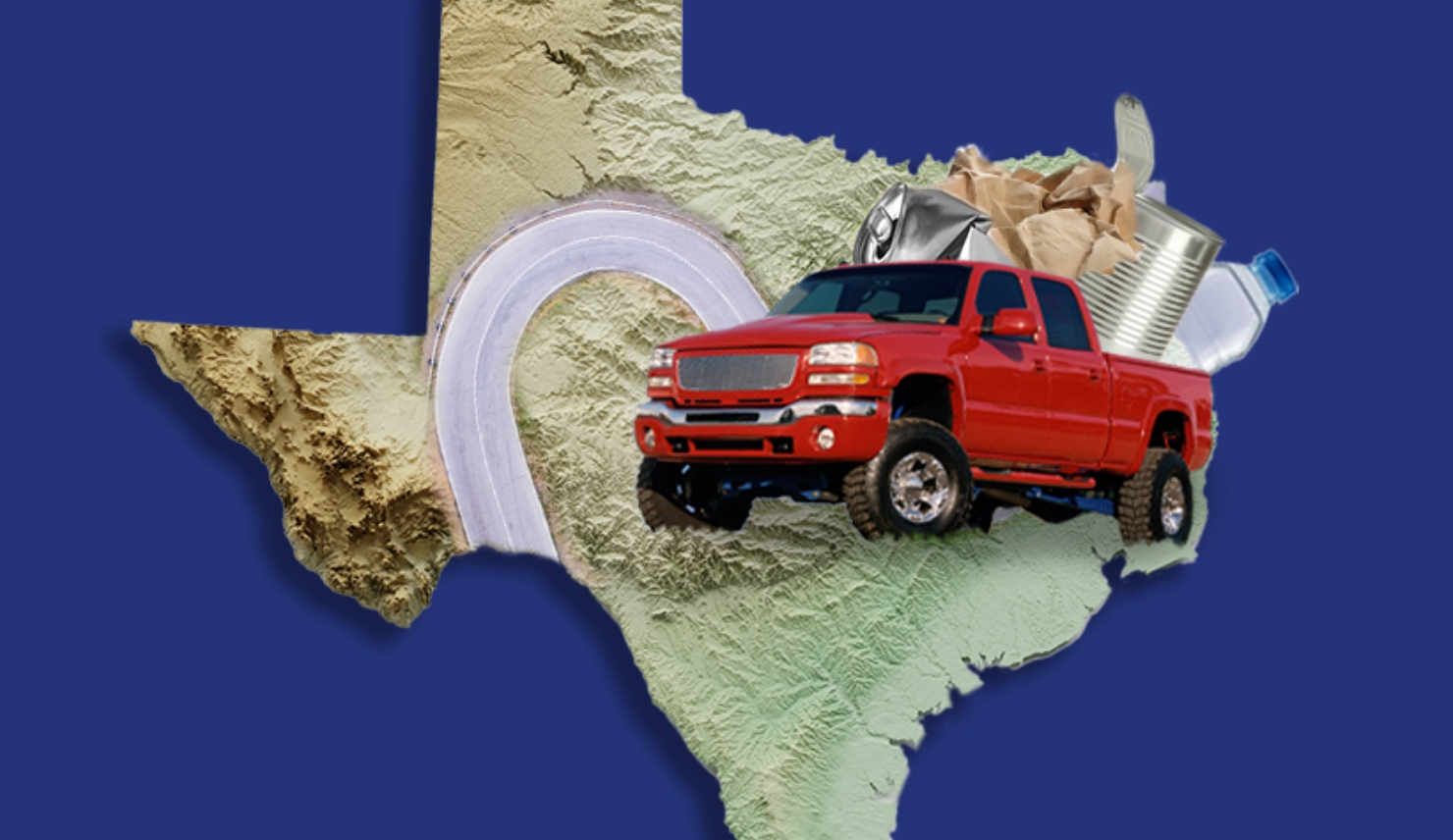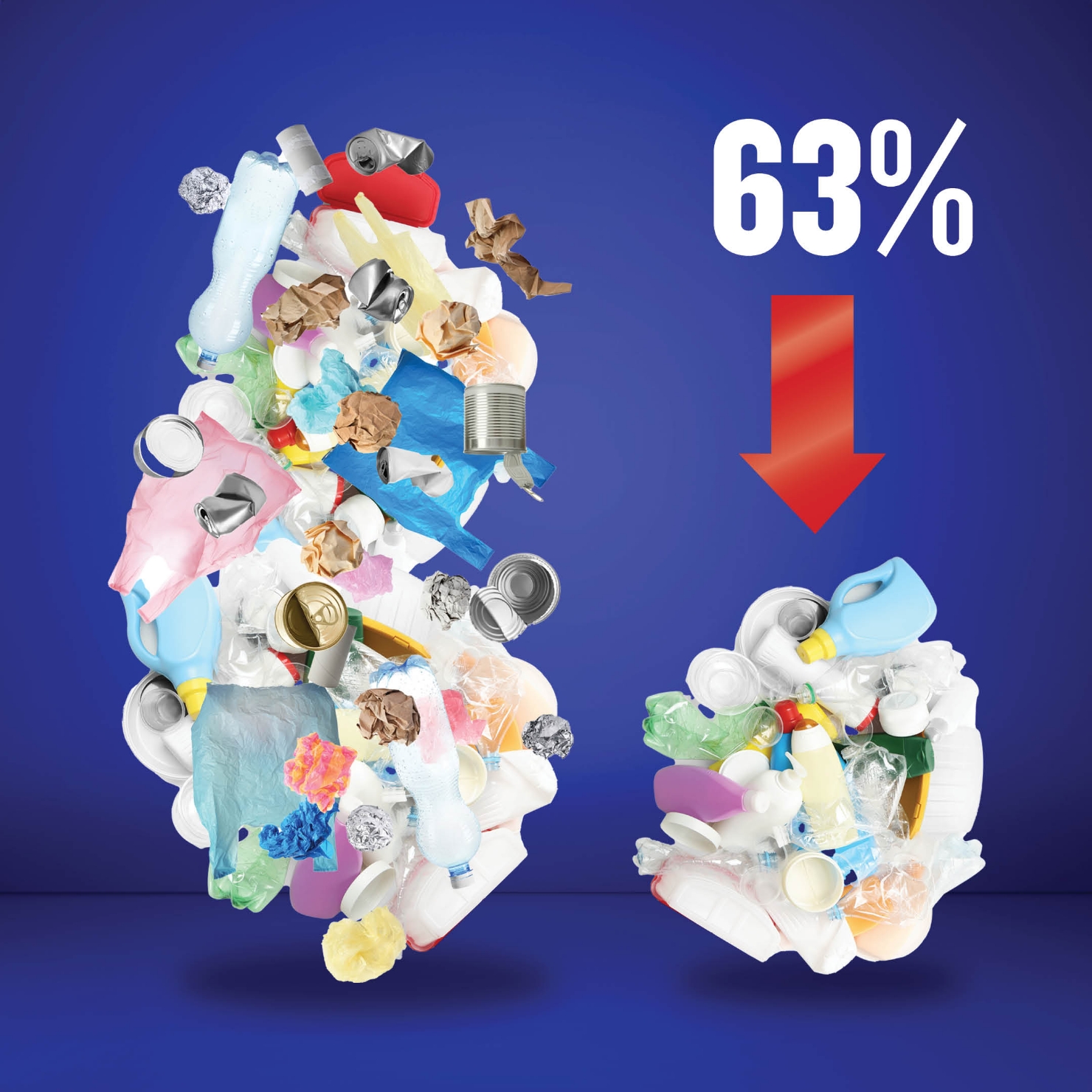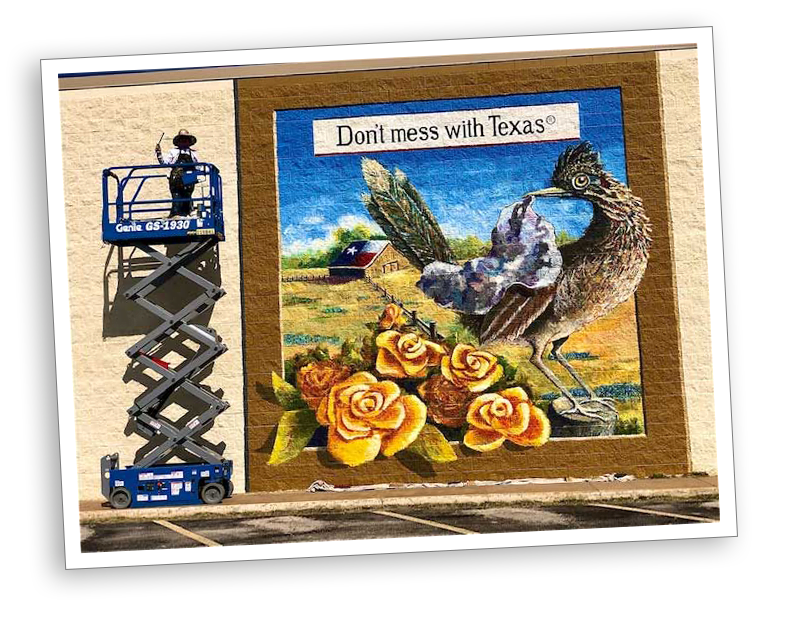TEXAS LITTER FACTS

When we know how litter really affects our state, we have a better understanding of why we shouldn’t throw trash on Texas roads and highways. Here, you’ll find statistics and studies that teach us why it’s so important to remember the impact of littering.
- 47% of all litter along Texas roads comes from motorists.
- “Large litter” is any piece of trash that’s more than two inches.
- “Micro litter” is any piece of trash that is two inches or smaller.
- You can be fined up to $2,000 if you are caught littering by law enforcement.

- Approximately 362 million pieces of litter accumulate on Texas roads every year.
- Beverage containers including water bottles and cans comprise the most litter on our roads.
- 29% of all micro litter on our roads is from cigarette butts.
- Overall, between 2013 and 2023, “large litter” was reduced on Texas roads by 63.2%.

LITTER RESEARCH
2020 ATTITUDES AND BEHAVIORS STUDY
This study analyzes Texans' attitudes and behavior toward littering and the slogan "Don't mess with Texas." This year’s study continues to show that within the general population, awareness of the slogan is very high, with most residents associating it with an anti-litter message and keeping our beautiful state clean.
View 2020 Attitudes and Behaviors Study Executive Summary (PDF, 459 KB)
View 2020 Attitudes and Behaviors Study Full Report (PDF, 2 MB)
2019 VISIBLE LITTER STUDY RESULTS
Texas Department of Transportation (TxDOT), in partnership with GDC Marketing & Ideation (GDC), and Environmental Resources Planning (ERP), conducted a Visible Litter Study (VLS) to estimate the projected number of pieces and types of litter on Texas roadways in 2019 (a follow-up to a 2013 research study).
View 2019 Litter Prevention Research Executive Summary (PDF, 74 KB)
View 2019 Litter Prevention Research Full Report (PDF, 1 MB)
2017 ATTITUDES AND BEHAVIORS STUDY
This study analyzes Texans' attitudes and behavior toward littering and the slogan "Don't mess with Texas." This year’s study continues to show that within the general population, awareness of the slogan is very high, with most residents associating it with an anti-litter message and keeping our beautiful state clean.
View 2017 Attitudes and Behaviors Study Executive Summary (PDF, 70 KB)
View 2017 Attitudes and Behaviors Study Full Report (PDF, 489 KB)
2013 ATTITUDES AND BEHAVIORS STUDY
Conducted ever two years, this study analyzes Texans' attitudes and behavior toward littering and the slogan "Don't mess with Texas." Within the general population, awareness of the slogan is very high, with most residents associating it with an anti-litter message and keeping our beautiful state clean. However about a third of Texas residents still admitted to littering in the past month, with millennials (16-34) having a much higher incidence of littering compared to older adults. This study was conducted on behalf of the Texas Department of Transportation by Decision Analyst, Inc. and Sherry Matthews Advocacy Marketing.
View 2013 Attitudes and Behaviors Study Executive Summary (PDF, 281 KB)
View 2013 Attitudes and Behaviors Study Full Report (PDF, 3.1 MB)
2013 VISIBLE LITTER STUDY RESULTS
Texas Department of Transportation (TxDOT), in partnership with Sherry Matthews Advocacy Marketing (SMAM), and Environmental Resources Planning (ERP), conducted a Visible Litter Study (VLS) to estimate the projected number of pieces and types of litter on Texas roadways in 2013 (a follow-up to a 2009 research study).
View 2013 Litter Prevention Research Executive Summary (PDF, 375 KB)
View 2013 Litter Prevention Research Full Report (PDF, 1.3 MB)


